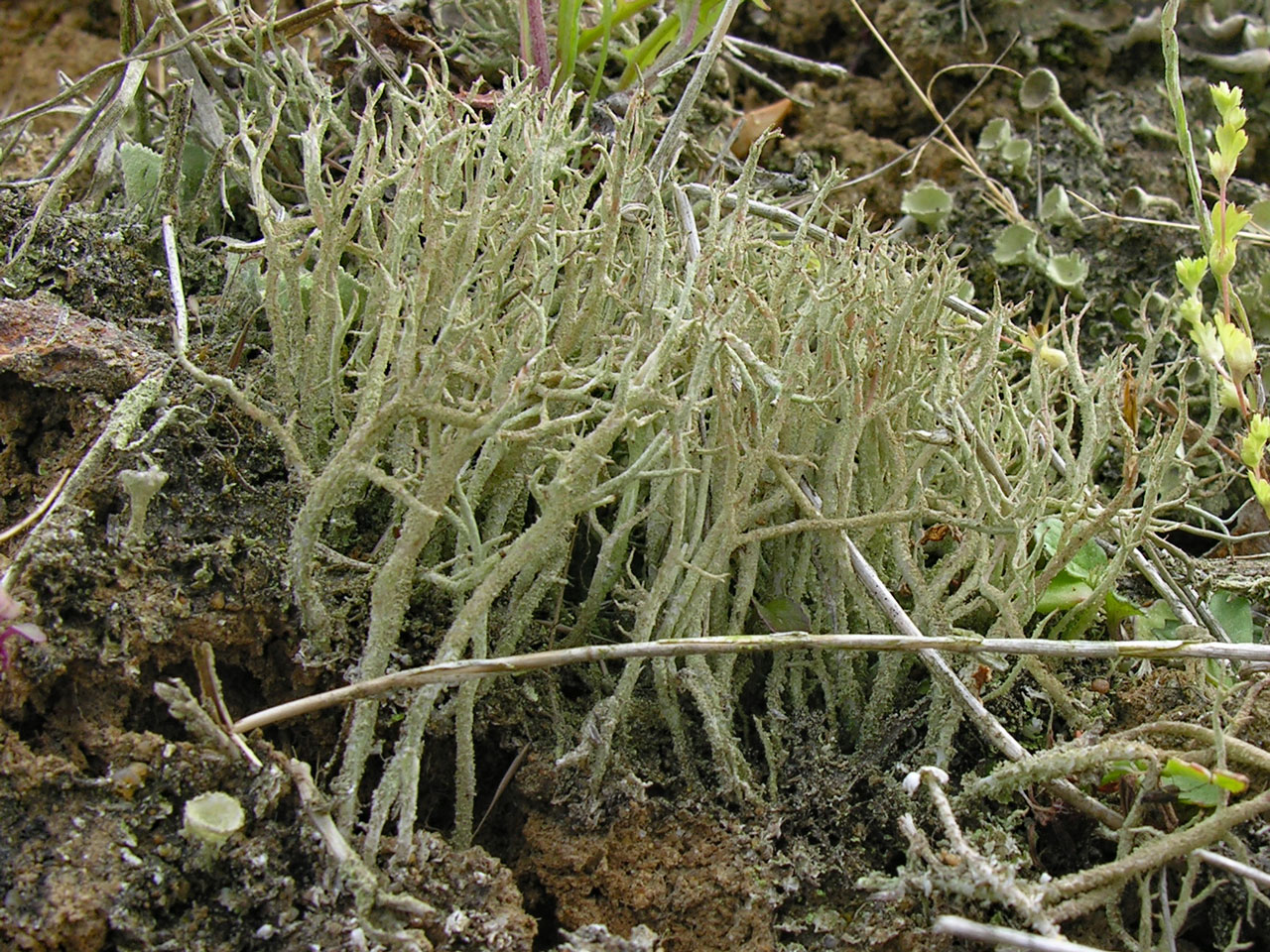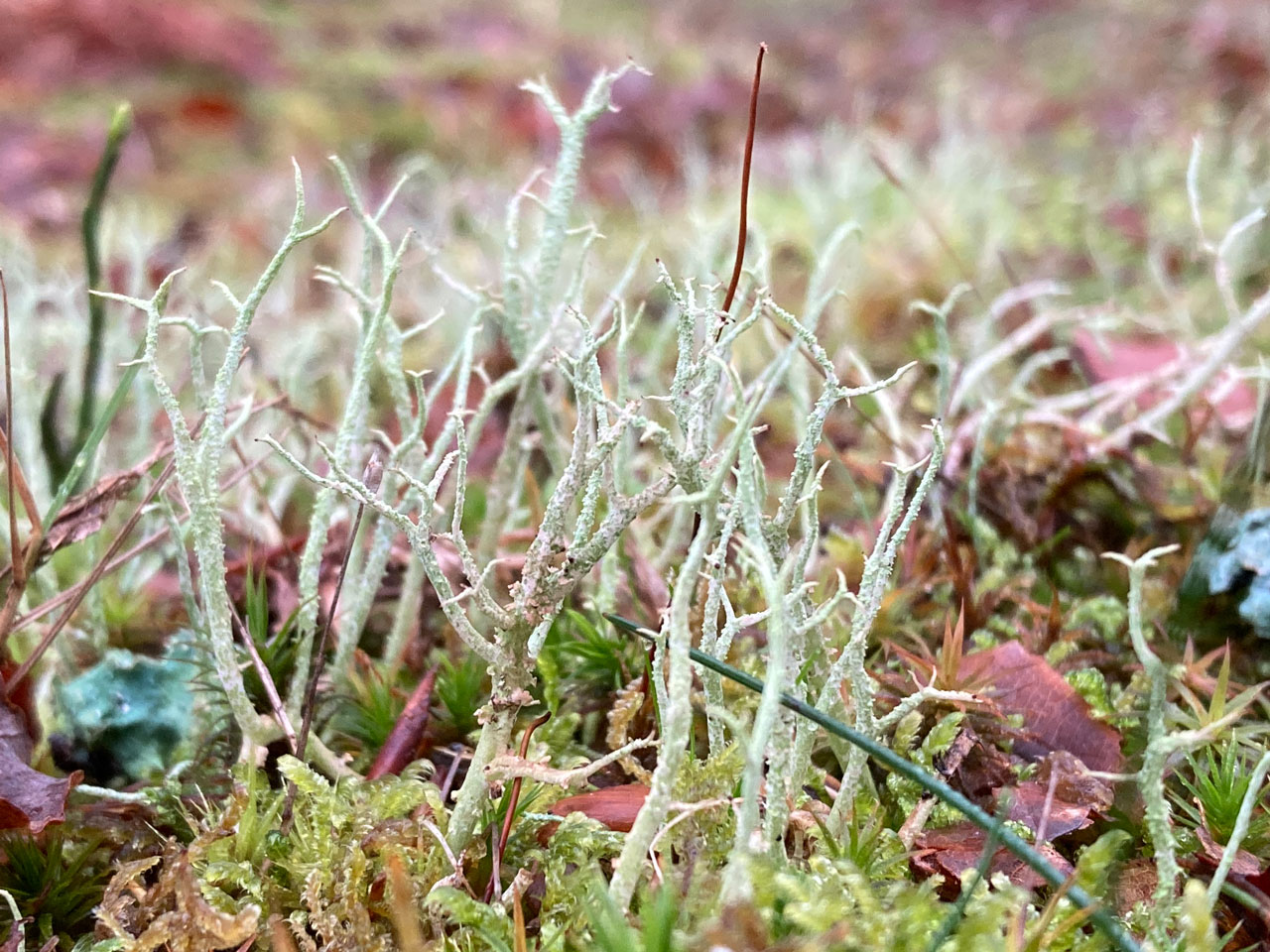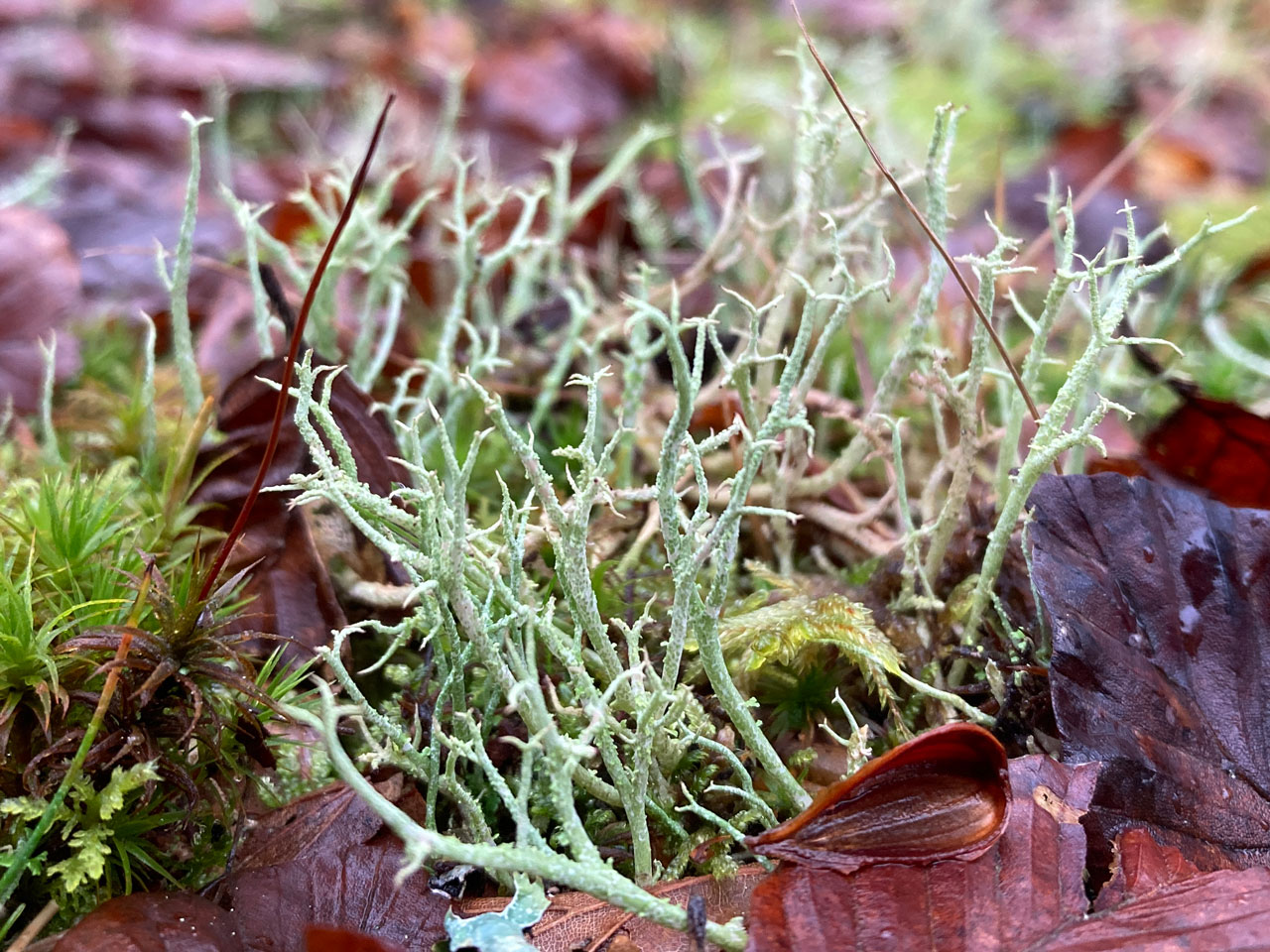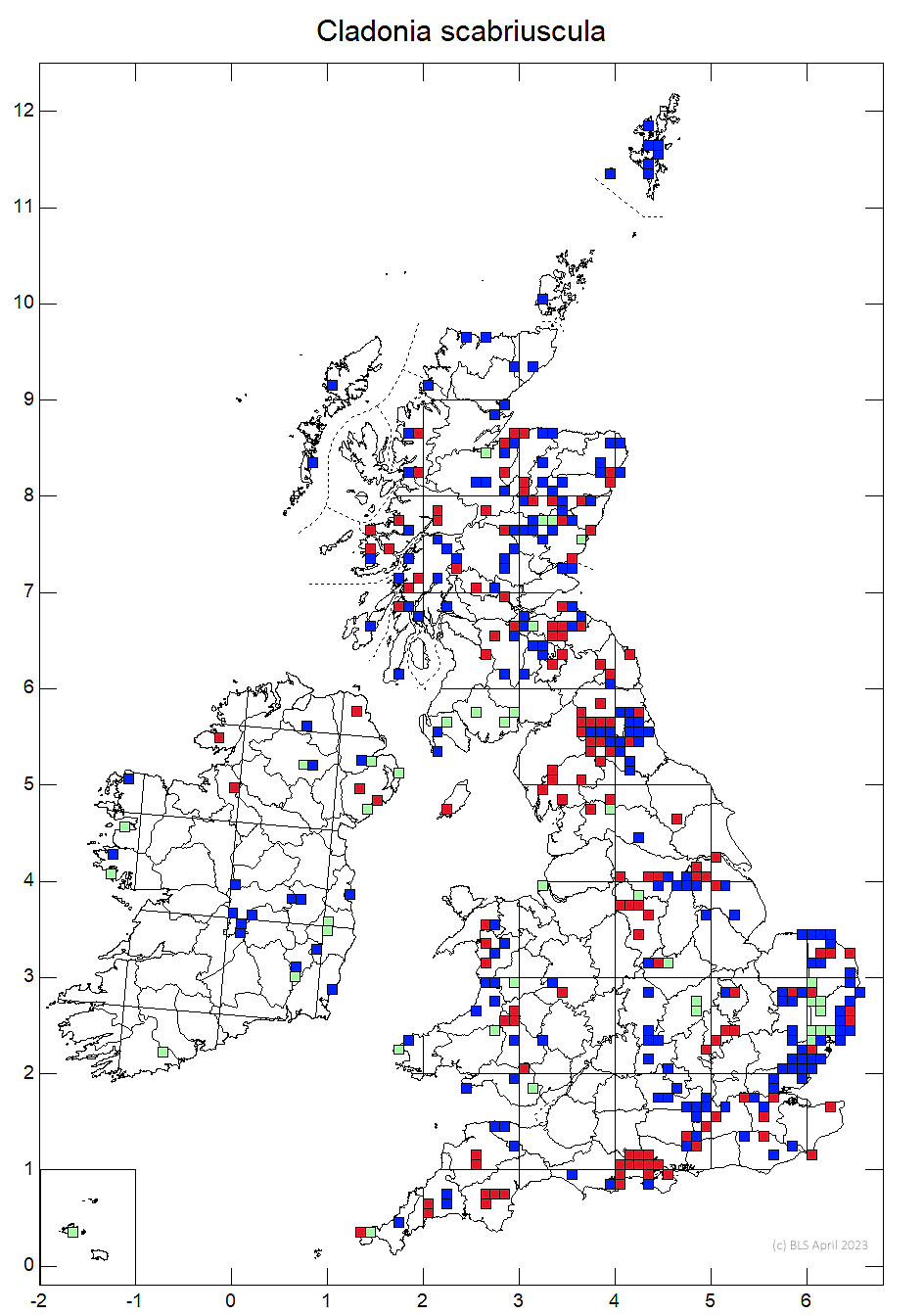A False Reindeermoss similar to Cladonia furcata and differing mainly in the peeling cortex, which develops into small squamules and scattered coarse soredia. In similar habitats and often growing with Cladonia furcata.
Like C. furcata, but with a more slender habit, paler greenish white colour and the tendency for the cortex to peel, become partly decorticate and notably scabrid with numerous, small peeling squamules and scattered coarse soredia, particularly towards the apices of the podetia. Thallus C–, K± yellow, KC–, Pd+ red, UV– (fumarprotocetraric acid, rarely traces of atranorin).
Sometimes difficult to distinguish from squamulose specimens of Cladonia furcata but specimens of C. scabriuscula usually have, in part, a matt, scabrid surface especially towards the tips due to an incipient peeling of the cortex. C. glauca is UV+ white and ± entirely finely sorediate and often has single inconspicuous vertical furrow along the length the podetia.
On peat in moorlands in the uplands and less acid heaths, acid grasslands and woodlands in lowland situations, old wall tops and heavy metal mine spoil.

Throughout Britain and Ireland but rather local with more records from the east.
Pino-Bodas, R., Sanderson, N., Cannon, P., Aptroot, A., Coppins, B., Orange, A. & Simkin, J. (2021). Lecanorales: Cladoniaceae, including the genera Cladonia, Pilophorus and Pycnothelia. Revisions of British and Irish Lichens 19: 1-45. Link
Text by Neil A Sanderson, based on Pino-Bodas et al (2021)



